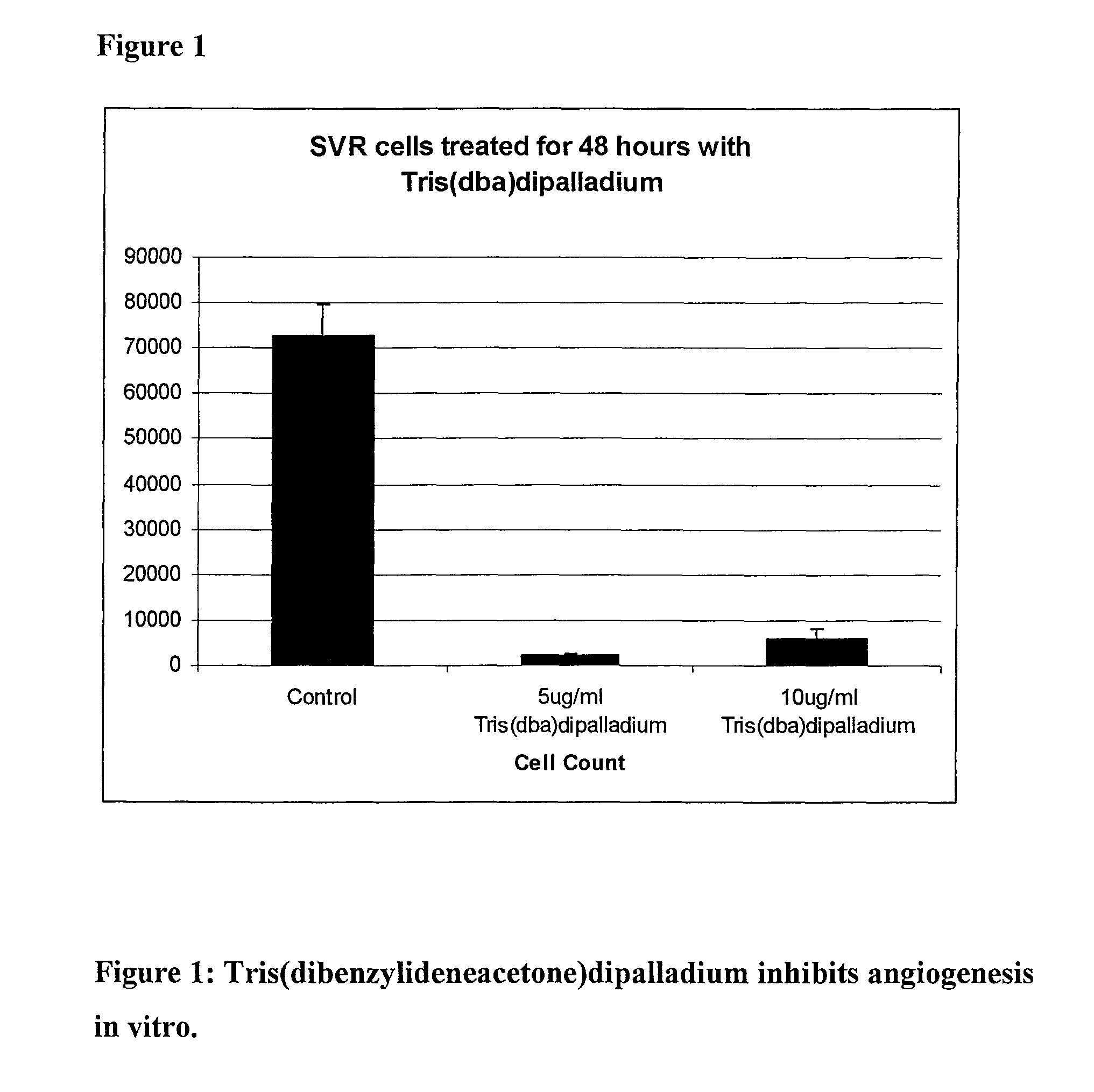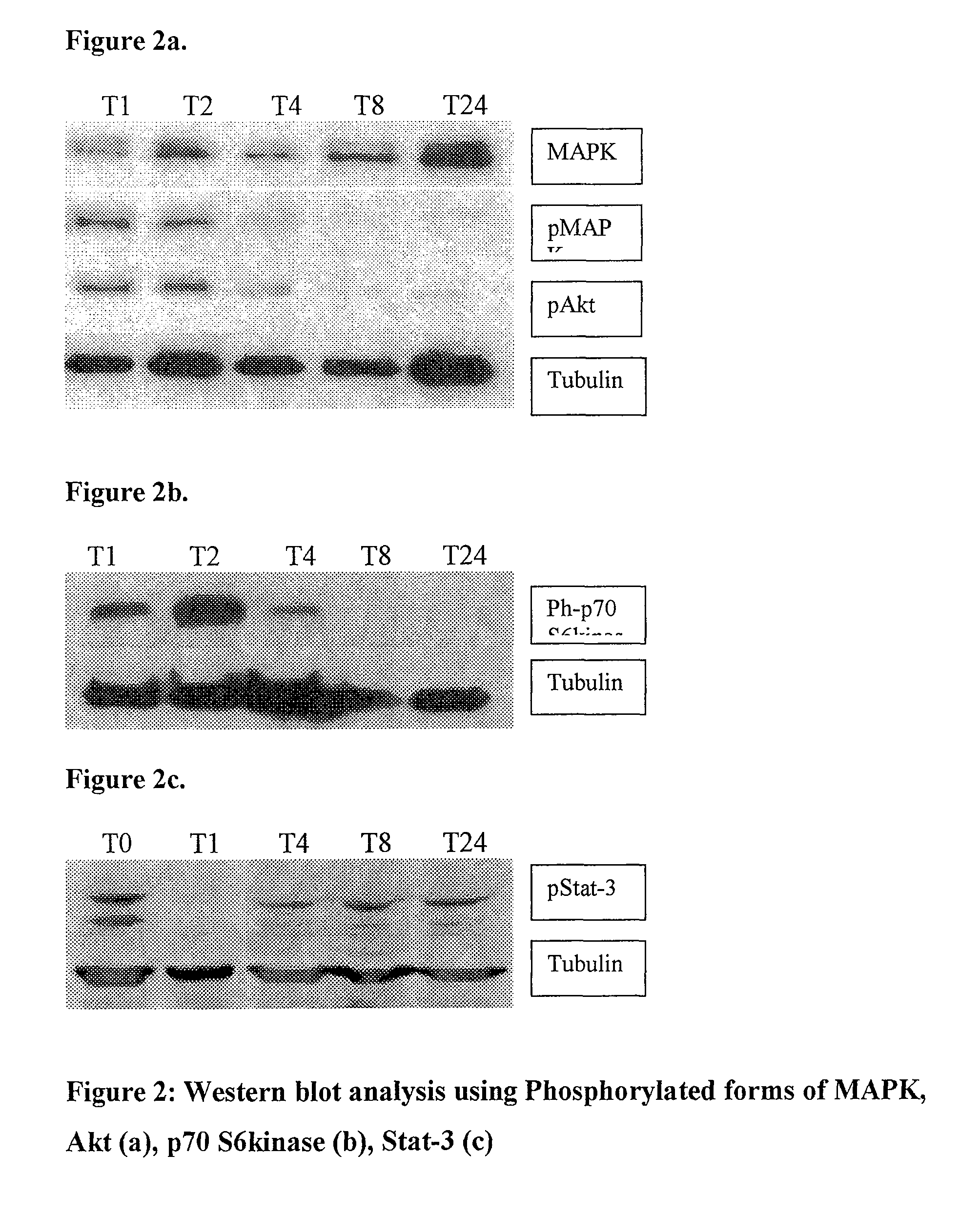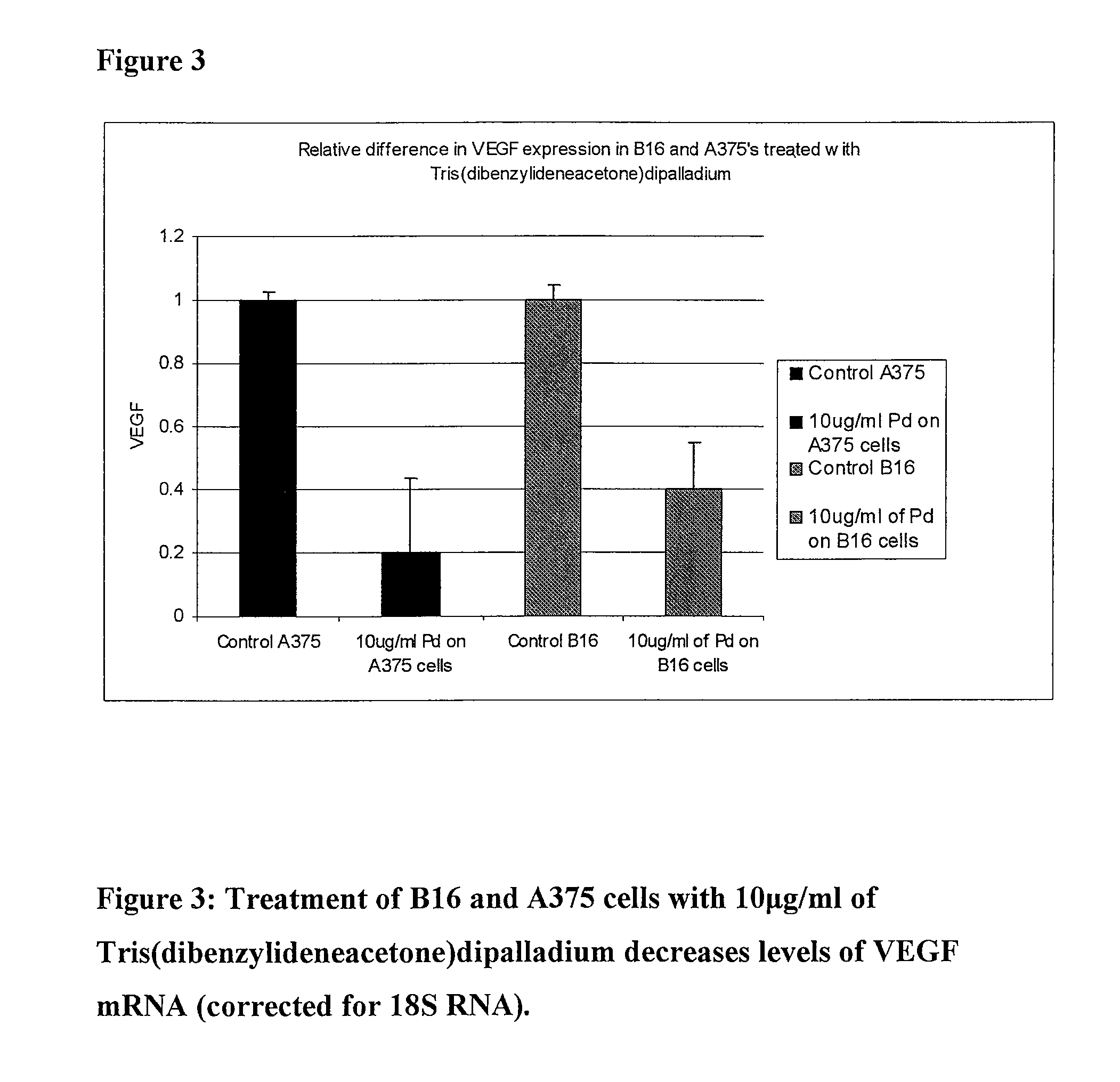Palladium complexes inhibit N-myristoyltransferase activity in vitro and cancer growth in vivo
a technology of n-myristoyltransferase and complexes, which is applied in the direction of heterocyclic compound active ingredients, biocide, drug compositions, etc., can solve the problems of notoriously difficult to treat and less effective against established tumors
- Summary
- Abstract
- Description
- Claims
- Application Information
AI Technical Summary
Benefits of technology
Problems solved by technology
Method used
Image
Examples
example 1
[0060]In order to evaluate the potential of tris(dibenzylideneacetone)dipalladium as an angiogenesis inhibitor, a proliferation assay was performed using SVR cells, an established murine model of angiogenesis (24). The assay was performed according to the method previously described by the Arbiser lab. Ten thousand SVR cells per well were plated in a 24-well plate. After incubation for twenty-four hours at 37 degrees and 5% CO2, the cells were treated with either 5 ug / mL or 10 ug / mL tris(dibenzylideneacetone)dipalladium or a control volume of DMSO. Treatment was from a stock solution of 10 mg / ml tris(dibenzylideneacetone)dipalladium dissolved in DMSO. The cells were allowed to incubate for an additional 48 hours and then were counted (FIG. 1). It was found that treatment with tris(dba)dipalladium for forty-eight hours significantly reduced the number of viable cells. A 5 ug / ml concentration of tris(dibenzylideneacetone)dipalladium resulted in a 97% decrease i...
example 2
Western Blot Analysis
[0061]We sought to determine the extent to which Tris(dibenzylidenacetone)dipalladium inhibits MAPK, Akt in murine melanoma model and pStat3, PS6 kinase in human melanoma model.
[0062]To examine this effect, we tested 10 μg / ml Tris(dba)dipalladium on MAPK and Akt signaling pathway using B16 melanoma cells. For signal transduction analysis, B16 cells, untreated and treated with 10 μg / ml tris(dibenzylideneacetone)dipalladium at timed intervals, were lysed in Nonidet P-40 lysis buffer (1% Nonidet P-40, 150 mM NaCl, 10% glycerol, 20 mM HEPES, 1 mM phenylmethylsulfonyl fluoride, 2.5 mM EDTA, 100 μM Na3VO4, and 1% aprotinin). The lysate was spun in microfuge, and the pellet was discarded. Protein concentration of the supernatant was determined by the Bradford assay using BSA as a standard. Samples were treated with Laemmli sample buffer and heated to 90° C. for 5 min before SDS-PAGE (National Diagnostics, Atlanta, Ga.) and was transferred to nitrocellulose membranes. T...
example 3
Quantitative RT-PCR for and VEGF in B 16 Cells and A375 Cells Treated with Vehicle Control and 10 μg / ml Tris(dibenzylideneacetone)dipalladium
[0064]We performed RT-PCR to determine whether Tris(dibenzylideneacetone)dipalladium inhibits VEGF expression in murine and human melanoma cells in vitro.
[0065]B 16 cells and A 375 cells were seeded equally into 2 T-25 flasks each and 24 hours later were treated with 0 and 10 μg / ml Tris(dibenzylideneacetone)dipalladium (Aldrich 328774) in DMSO for 24 hours. RNA was extracted and purified using TRIZOL (Sigma T 9424) and measured using spectrophotometer (Perkin-Elmer UV / VIS). 1 μg of RNA was used for DNase Amplification (Invitrogen Cat No. 18068-015) followed by First-Strand Synthesis for RT-PCR (SuperScript Cat No. 12371-019). 96-well Optical Reaction Plate (ABI PRISM, code 128) was used for the RT-PCR reaction. 2.5 μl of template, which had been diluted 1:10 in cross-linked water, was used in each well and the experiment was performed in tripli...
PUM
| Property | Measurement | Unit |
|---|---|---|
| concentrations | aaaaa | aaaaa |
| concentrations | aaaaa | aaaaa |
| concentrations | aaaaa | aaaaa |
Abstract
Description
Claims
Application Information
 Login to View More
Login to View More - R&D
- Intellectual Property
- Life Sciences
- Materials
- Tech Scout
- Unparalleled Data Quality
- Higher Quality Content
- 60% Fewer Hallucinations
Browse by: Latest US Patents, China's latest patents, Technical Efficacy Thesaurus, Application Domain, Technology Topic, Popular Technical Reports.
© 2025 PatSnap. All rights reserved.Legal|Privacy policy|Modern Slavery Act Transparency Statement|Sitemap|About US| Contact US: help@patsnap.com



